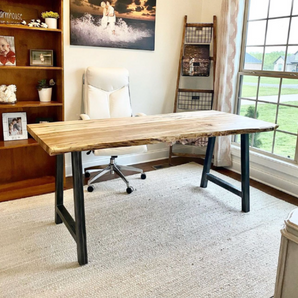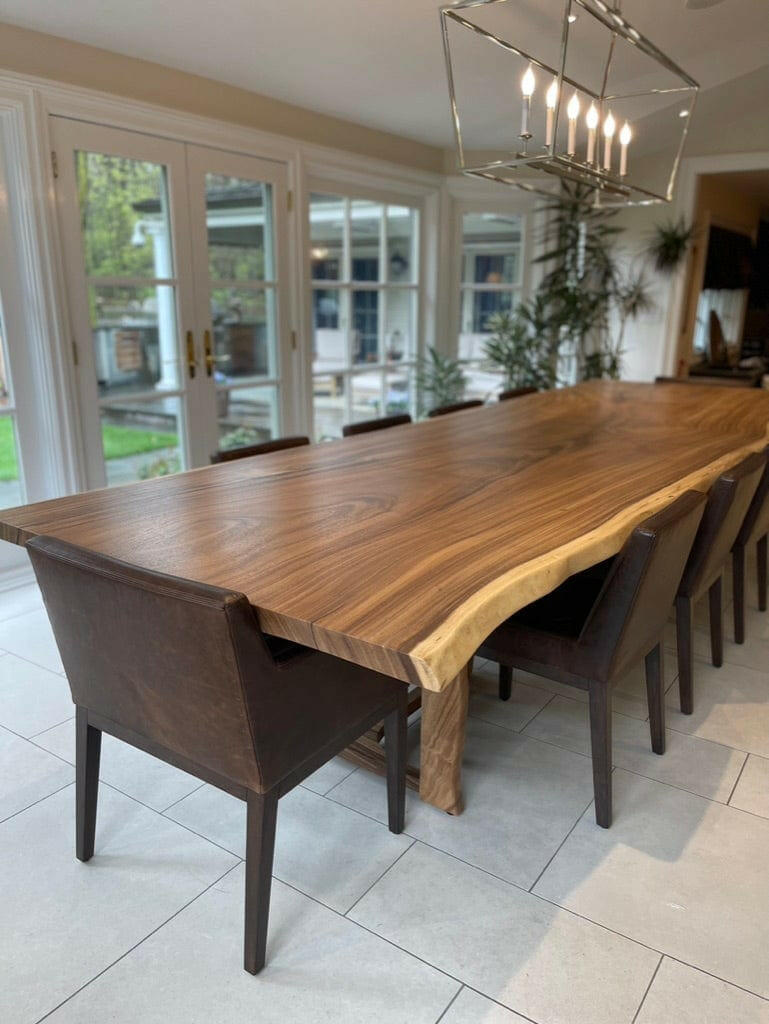The Ultimate Guide to Picking Resilient Dining Room Table Legs
The Ultimate Guide to Picking Resilient Dining Room Table Legs
Blog Article
A Comprehensive Consider Eating Table Leg Styles: Finding the Ideal Suit
Choosing the best dining table leg style is vital for both aesthetic appeal and sensible performance. Conventional four legs use timeless style and stability, while the pedestal base supplies enhanced legroom and a modern-day appearance. For those with larger tables, trestle legs ensure strong support, whereas barrette legs present a mid-century modern-day ambiance with their minimal design. The x-shaped legs mix contemporary design with enhanced security. Each of these choices brings unique advantages, making the choice greater than just a matter of choice. Explore better to discover which design perfectly enhances your dining space and way of life.
Traditional 4 Legs
Amongst the numerous kinds of eating table leg designs, the conventional four-leg style continues to be a classic selection for several homes. 4 legs provide balanced assistance, guaranteeing the table stays secure and qualified of bearing significant weight (dining room table legs).
From an aesthetic point of view, the standard four-leg layout can be easily adapted to different indoor designs. Whether crafted from wood, metal, or a combination of materials, these legs can be elaborately carved, smooth and minimalistic, or anything in between. Their versatility enables them to match both rustic and contemporary setups seamlessly.
Additionally, the simple structure of the four-leg style helps with convenience of motion and placement within a room. Unlike even more facility bases, this design lessens blockages, providing enough legroom for diners. In recap, the conventional four-leg eating table leg style marries enduring style with practical performance, making it an astute choice for those seeking both type and feature in their eating furniture.
Stand Base
Usually celebrated for its elegant and space-efficient style, the pedestal base is a recognized alternative to the traditional four-leg setup in dining table leg styles. Without corner legs, diners are afforded higher freedom of movement, making it an ideal choice for round and oblong tables that advertise more intimate and comprehensive events.
In addition, the pedestal base's central support can take care of substantial weight, permitting making use of much heavier table tops, such as marble or thick wood. This stamina paired with its aesthetic adaptability makes the stand base a popular option in both typical and contemporary interior setups. It can perfectly integrate with different layout motifs, from timeless sophistication to minimal modernity. The central column itself provides a canvas for elaborate styles and creative expressions, including a component of aesthetic passion under the table. In recap, the pedestal base incorporates functionality with design, making it a refined and sensible option for varied eating environments.
Trestle Legs
Trestle legs give a robust and classic foundation for eating tables, defined by their straight cross-bracing and durable assistance beam of lights. Stemming from medieval times, this design has actually advanced yet kept its necessary structure, making it a seasonal fave in both standard and contemporary setups. The central trestle beam, frequently sustained by two or even more upright messages, offers phenomenal stability, enabling larger table sizes without the need for additional legs.
A substantial benefit of trestle leg tables is the adequate legroom they supply. Unlike tables with 4 edge legs, the absence of obstructions at the table's sides supplies unimpeded area for chairs and diners, boosting convenience and availability. This makes trestle tables suitable for accommodating larger gatherings, whether in a Find Out More dining area or a reception hall.
The aesthetic versatility of trestle legs is notable. Readily available in a range of products such as timber, steel, and composite, they can be finished to enhance a vast variety of indoor styles. From rustic farmhouse to sleek modern designs, trestle legs can be tailored to match individual preferences. Their long-lasting appeal and practical benefits make trestle legs a compelling option for those seeking both design and functionality page in their eating table.
Barrette Legs

The allure of barrette legs hinges on their simplicity and flexibility - dining room table legs. Readily available in a range of products, including steel and brass, they can be ended up in countless shades to enhance different indoor designs. Whether coupled with a rustic wooden table top or a modern glass surface area, barrette imp source legs effortlessly mix functionality with a touch of vintage beauty
Durability is an additional remarkable function of barrette legs. Despite their delicate appearance, these legs are crafted to birth significant weight, making sure the table stays stable and safe and secure. In addition, they are relatively simple to mount, making them a popular option for DIY fanatics and specialist furniture makers alike.
X-Shaped Legs

Built from products such as steel, wood, or a mix of both, X-shaped legs can be customized to match various style preferences. Steel legs commonly provide a sleek and commercial feeling, ideal for loft-style apartments and modern-day dining rooms. On the other hand, wooden X-shaped legs provide a warmer, extra rustic charm, appropriate for farmhouse or eclectic insides. The versatility in products enables homeowners to customize their table to much better fit their total layout system.
Additionally, the engineering behind X-shaped legs guarantees also weight circulation, reducing the danger of wobbling and enhancing resilience. This makes them specifically well-suited for larger table that call for extra support. In essence, X-shaped legs mix useful engineering with modern aesthetic appeals, making them a timeless choice for varied dining settings.
Conclusion
An extensive understanding of dining table leg styles exposes the unique attributes and advantages of each design. Trestle legs make certain robust assistance for larger tables, and barrette legs present a mid-century modern aesthetic.
Report this page